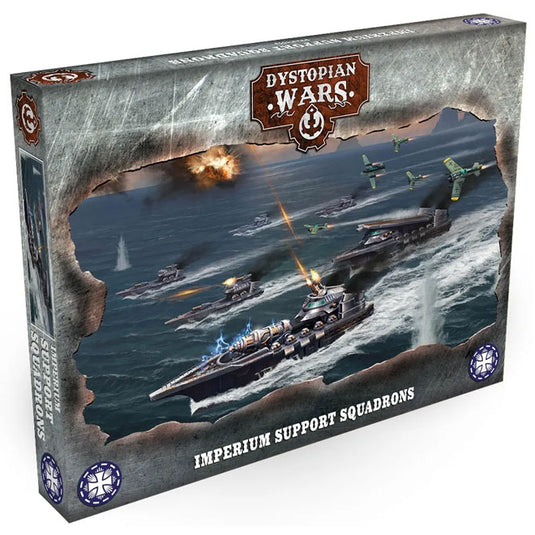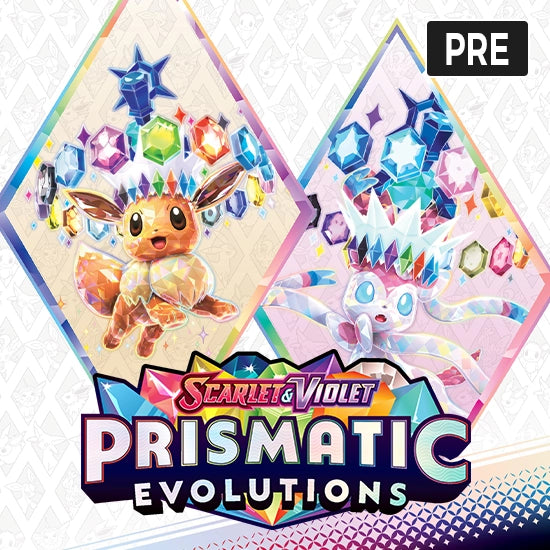Description
Commonly found in support of larger vessels of the Imperium's Navy are a number of specialised cruiser variants. Built on the ubiquitous Blucher Class hull, these ships can be refitted as fast as any other frontline ship. The Konrad Class Support Carrier bears a flight deck with supply for a small number of Messer class fighters, providing air power where needed. Reiter Class Flak Cruisers are equipped with an impressive array of Vierling cannons, deadly multiple barreled weapons that launch scores of flak rockets into the air. These two vessels ensure that Blitzen Bomber squadrons can safely reach their targets without interception. Finally the Volsung Class deploys the formidable Sturmbringer Cannons on their decks that can char flesh and rupture enemy armour with terrible voltaic energy.The Imperium operates a large number of destroyer squadrons. Superior to the smaller frigates and escorts, Sigimer Class are longer, more heavily armoured and boast additional firepower. Toten Class, are heavier still and are equipped with two Sturmklaue cannons to cast bolts of lightning into the enemy.
The Imperium Support Squadrons kit builds six multi-part plastic and resin miniatures;
2x Reiter Class CruisersEach Cruiser can alternatively be built as either Konrad or Volsung Class4x Sigimer Class DestroyersEach Destroyer can alternatively be built as Toten Class2x Blitzen Bomber special SRS Token2x Imperium SRS token4x Base
Miniatures are supplied unpainted and some assembly will be required.Unit Cards are not included and can be found on the Dystopian Wars website.
Frequently Asked Questions
What are miniatures used for in tabletop games?
Miniatures are small, detailed models used in tabletop games to represent characters, creatures, and scenery.
They enhance the visual experience and aid in gameplay by providing a physical representation of game
elements.
How do I paint my miniatures?
Painting miniatures involves several steps: priming the miniature with a base coat, applying base colors,
adding details with fine brushes, and finishing with a protective sealant. Many hobbyists use acrylic paints
and invest in quality brushes for the best results. You can pick some up from our Paints
Section
What materials are miniatures typically made from?
Miniatures are commonly made from plastic, resin, or metal. Each material has its own advantages; plastic is
lightweight and affordable, resin captures fine details well, and metal miniatures are durable and have a
classic feel.
How can I start collecting miniatures?
Start by choosing a game or genre that interests you. Purchase a starter set or a few miniatures to begin
with, and gradually expand your collection. Joining local gaming groups or online communities can provide
valuable advice and support.
Where can I buy miniatures?
Miniatures can be purchased from Here. As well as from Hobby shops
like our Gaming Centre, or at
Conventions, or Games Workshop
What are some tips for assembling miniatures?
Use a hobby knife or clippers to carefully remove pieces from sprues. Dry fit parts before gluing to ensure
proper alignment, and use a plastic or super glue appropriate for the material. Allow glued parts to fully
dry before handling. All of these can be found Here
Can miniatures be used in different games?
While some miniatures are specific to certain games, many can be used across different tabletop games and
RPGs, especially if they fit the theme or setting. Check the scale and style to ensure compatibility.
How should I store and transport my miniatures?
Store miniatures in a cool, dry place, ideally in a protective case with individual compartments to prevent
damage. When transporting, use foam trays or padded bags to cushion the miniatures and keep them secure.
Are there any beginner-friendly miniature painting tutorials?
Yes, there are many beginner-friendly tutorials available online. Websites, YouTube channels, and hobby blogs
often provide step-by-step guides and videos to help newcomers learn painting techniques and improve their
skills.



















